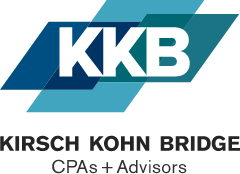Complex rules
Many companies award stock options and other forms of share-based payments to workers to promote exceptional performance and reduce cash outflows from employee compensation. But accounting for these payments can be confusing and time-consuming, especially for private companies.
To measure the fair value of stock options under existing U.S. Generally Accepted Accounting Principles (GAAP), companies generally use an option-pricing model that factors in the following six variables:
- The option’s exercise price,
- The expected term (the time until the option expires),
- The risk-free rate (usually based on Treasury bonds),
- Expected dividends,
- Expected stock price volatility, and
- The value of the company’s stock on the grant date.
The first four inputs are fairly straightforward. Private companies may estimate expected stock price volatility using a comparable market-pricing index. But the value of a private company’s stock typically requires an outside appraisal. Whereas public stock prices are usually readily available, private company equity shares typically aren’t actively traded, so observable market prices for those shares or similar shares don’t exist.
To complicate matters further, employee stock options are also subject to Internal Revenue Code Section 409A, which deals with nonqualified deferred compensation. The use of two different pricing methods usually gives rise to deferred tax items on the balance sheet.
Simplification measures
Accounting Standards Update (ASU) No. 2021-07, Compensation-Stock Compensation (Topic 718): Determining the Current Price of An Underlying Share for Equity-Classified Share-Based Awards, applies to all equity classified awards under Accounting Standards Codification Topic 718, Stock Compensation.
The updated guidance allows private companies to determine the current price input in accordance with the federal tax rules, thereby aligning the methodology used for book and federal income tax purposes. Sec. 409A is referenced as an example, but the rules also include facts and circumstances identified in Sec. 409A to consider for reasonable valuations. The practical expedient will allow private companies to save on costs, because they’ll no longer have to obtain two independent valuations separately for GAAP and for tax purposes.
Right for your company?
Private companies that take advantage of the practical expedient will need to apply it prospectively for all qualifying awards granted or modified during fiscal years beginning after December 15, 2021, and interim periods within fiscal years beginning after December 15, 2022. Early application, including application in an interim period, is permitted for financial statements that haven’t yet been issued or made available for issuance as of October 25, 2021. Contact us for more information.
© 2021




Advantages of keeping your business separate from its real estate
/in Tax/by KKB CPAsIt may be advantageous to separate ownership of a business’s real estate from the business. But it isn’t always advisable. Here’s a look at the issues. Continue Reading Advantages of keeping your business separate from its real estate
Cutoffs: When to report revenue and expenses
/in Tax/by KKB CPAsDoes your company follow the cutoff rules? Loose interpretation of the accounting rules can lead to errors and unexpected audit adjustments. Here’s how to get it right. Continue Reading Cutoffs: When to report revenue and expenses
Help ensure your partnership or LLC complies with tax law
/in Tax/by KKB CPAsGuaranteed payments to partners and payments to retired partners are just two of the tax issues that should be addressed in your partnership (or LLC operating) agreement. Here are the details. Continue Reading Help ensure your partnership or LLC complies with tax law